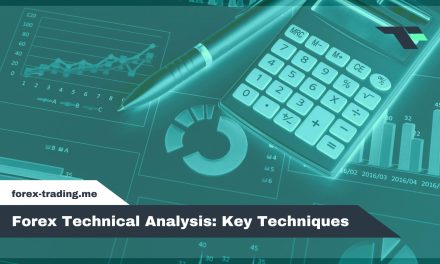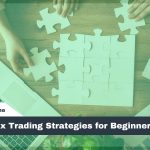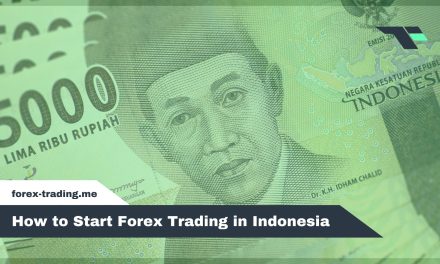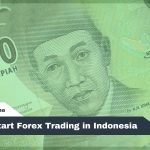
Most Traded Forex Pairs: Top Currency Combos

The seven major forex pairs dominate global currency markets, accounting for approximately 75% of all daily trading volume worth $7.5 trillion. EUR/USD leads with 25% market share, offering exceptional liquidity and tight spreads, while USD/JPY captures 13% and GBP/USD holds 9% of total activity. These major pairs feature currencies from the world’s largest economies, providing razor-thin spreads, predictable market hours, and reliable economic data that supports effective analysis. Understanding their unique characteristics reveals favorable trading opportunities.
Table of Contents
Understanding Most Traded Forex Pairs
Major forex pairs are defined by their inclusion of the US dollar paired with currencies from the world’s largest economies, including the euro, Japanese yen, British pound, and others. These pairs command the highest trading volumes because they represent stable, liquid markets where institutional investors, central banks, and retail traders can execute large transactions without significant price disruption. Volume breakdown analysis reveals that just seven major pairs account for approximately 75% of all forex transactions, with EUR/USD alone representing roughly one-quarter of global daily turnover.
What Defines Major Forex Pairs
Classification within the foreign exchange market depends on three fundamental criteria that determine a currency pair’s status and trading importance. Major forex pairs must include the US dollar paired with another G10 currency, representing economies with substantial global influence. These pairs demonstrate exceptional liquidity, meaning traders can execute large transactions without greatly impacting market prices. The underlying economies must maintain strong credit ratings and economic stability, ensuring consistent trading interest and reliable market behavior.
Four characteristics that make major pairs irresistible to traders:
- Massive daily volume exceeding billions in transactions
- Razor-thin spreads minimizing trading costs
- Predictable market hours with continuous liquidity
- Reliable economic data supporting technical analysis
Major pairs collectively account for over 70% of daily forex volume, establishing them as the market’s backbone and primary profit centers.
Volume Breakdown Insights
Understanding these defining characteristics becomes meaningful when examining actual market data that reveals how trading activity distributes across the most prominent currency pairs. The EUR/USD commands approximately 25% of daily forex volume, making it the undisputed leader in global currency trading. The USD/JPY follows with roughly 13% market share, while GBP/USD captures about 9% of total activity. AUD/USD accounts for approximately 6.5% of daily volume, and USD/CAD represents around 5% of market transactions.
This volume distribution demonstrates the concentrated nature of forex trading, with these five major pairs collectively representing nearly 60% of all daily transactions. The remaining trading activity spreads across numerous other currency combinations, highlighting how liquidity concentrates within established major pairs that feature the world’s most economically significant currencies.
Here’s a quick reference to highlight how the top majors dominate global forex activity and what makes each pair essential for traders:
| Currency Pair | % of Daily Volume | Why It Matters |
|---|---|---|
| EUR/USD | 25% | Unmatched liquidity and razor-thin spreads, driven by two of the world’s largest economies. |
| USD/JPY | 13% | Deep liquidity during both Asian and U.S. sessions; ideal for seamless execution. |
| GBP/USD | 9% | High volatility around UK economic releases, offering clear event-driven opportunities. |
| AUD/USD | 6.5% | Commodity-linked pair that closely correlates with gold prices, adding strategic diversification. |
| USD/CAD | 5% | Reflects Canada’s oil exports; strong correlation with crude oil gives clear trade signals. |
| Other Major Pairs | 21.5% | Includes CHF, NZD, and others—together they complete the top seven that make up ~75% of all trades. |
This table underscores just how concentrated trading is among these majors and why each pair’s unique characteristics—whether it’s millisecond-tight spreads or commodity-driven trends—translate into real edge for forex traders.
Best Forex Pairs to Trade for New Traders
For new traders entering the forex market, EUR/USD stands as the most logical starting point due to its position as the world’s most traded currency pair, offering unmatched liquidity and the tightest spreads available. This pair benefits from extensive market analysis coverage and predictable trading patterns, while its average daily range of 80-100 pips provides sufficient movement for profit opportunities without excessive volatility that could overwhelm beginners. USD/JPY serves as an excellent secondary choice, delivering strong liquidity benefits and a more conservative daily range of 60-80 pips that allows new traders to develop their skills in a relatively stable environment.
Why EUR/USD Leads the Market
Most currency traders, regardless of experience level, gravitate toward EUR/USD as their primary trading instrument due to its unmatched combination of liquidity, cost efficiency, and predictability. This currency pair consistently maintains the largest trading volume globally, exceeding $1.5 trillion daily, which creates extraordinarily tight spreads often under 1 pip at major brokers.
The EUR/USD’s dominance stems from four critical advantages:
- Ultra-tight spreads reduce trading costs considerably compared to exotic pairs
- Massive liquidity pools guarantee instant order execution without slippage concerns
- Abundant market analysis from countless institutions provides thorough trading insights
- Predictable volatility patterns follow established eurozone and dollar index correlations
These characteristics make EUR/USD particularly accessible for new traders while remaining attractive to institutional investors seeking reliable market conditions.
USD/JPY’s Liquidity Benefits
The yen’s role as Asia’s premier reserve currency creates a liquidity powerhouse that makes USD/JPY the second most traded currency pair globally, with daily turnover consistently exceeding $600 billion. This massive volume translates into exceptionally tight spreads, often hovering around just one pip, which considerably reduces trading costs for newcomers. The pair benefits from overlapping market hours between major financial centers, ensuring consistent liquidity throughout most trading sessions. Tokyo’s prominence as a financial hub provides sustained volume during Asian hours, while New York trading extends liquidity into Western sessions. The strong economic relationship between the United States and Japan further stabilizes trading conditions, creating predictable price movements that help new traders develop technical analysis skills without facing extreme volatility spikes.
Below is a concise overview highlighting why EUR/USD and USD/JPY stand out for beginners, followed by a table that distills their key attributes into actionable insights.
Getting off to the right start means choosing pairs that balance ample movement with manageable risk. By focusing on EUR/USD’s unrivaled liquidity and tight spreads alongside USD/JPY’s stable volume and predictable behavior, new traders can build confidence and hone their skills before branching out.
| Currency Pair | Daily Turnover | Average Range (pips) | Typical Spread | Core Advantage |
|---|---|---|---|---|
| EUR/USD | $1.5 trillion/day | 80–100 | Under 1 pip | Ultra-tight spreads and deep liquidity for reliable entries |
| USD/JPY | $600 billion/day | 60–80 | ~1 pip | Steady liquidity across Asian and U.S. sessions |
This summary shows how EUR/USD’s combination of cost efficiency and predictable patterns makes it the ideal training ground, while USD/JPY offers a slightly calmer environment with consistent volume—both crucial factors for building a solid trading foundation.
Best Forex Currency Pairs to Trade by Strategy
Successful forex trading requires matching currency pairs to specific strategies based on their unique characteristics and market behaviors. GBP/USD stands out as an ideal choice for event-driven trading strategies, as this pair experiences dramatic volatility spikes of up to 30% following Bank of England announcements and other major economic events. Meanwhile, commodity-linked currencies like AUD/USD and USD/CAD offer distinct advantages for traders who focus on fundamental analysis, with AUD/USD maintaining approximately 0.6 correlation with gold prices and USD/CAD responding predictably to oil market movements.
GBP/USD: Event-Driven Volatility
When major UK economic events unfold, GBP/USD transforms into one of the forex market’s most volatile currency pairs, offering event-driven traders exceptional profit opportunities. Bank of England rate decisions and key UK economic data releases frequently generate price movements exceeding 150 pips, creating substantial trading windows for those prepared to capitalize on Brexit-related developments and monetary policy shifts.
Event-driven traders can exploit GBP/USD volatility through these strategic approaches:
- Monitor BoE rate decision announcements – Central bank policy changes trigger immediate and sustained price movements
- Track UK GDP and employment data releases – Economic indicators create predictable volatility spikes within minutes
- Analyze Brexit-related political developments – Geopolitical events generate extended trading opportunities across multiple sessions
- Implement tight risk management during high-impact events – Volatility amplifies both profit potential and downside risk exposure
AUD/USD & USD/CAD: Commodity Connections
While political events create dramatic price swings in major currency pairs, commodity-linked currencies like AUD/USD and USD/CAD offer traders opportunities to capitalize on resource market movements that drive sustained directional trends. The Australian dollar demonstrates a strong 0.7 correlation with gold prices, reflecting Australia’s position as a major metal exporter. This relationship enables traders to anticipate AUD/USD movements by monitoring precious metals markets.
Similarly, USD/CAD maintains an approximately 0.8 correlation with crude oil prices, driven by Canada’s substantial daily exports of 4 million barrels. When oil prices rise, the Canadian dollar typically strengthens against the US dollar. These commodity connections provide traders with additional fundamental analysis tools, allowing them to develop strategies based on resource market trends rather than relying solely on traditional economic indicators and monetary policy decisions.
To help traders quickly compare how these pairs align with event-driven and commodity-based strategies, refer to the table below for a concise breakdown of their defining characteristics and actionable insights.
| Currency Pair | Strategy Focus | Key Statistic | Typical Movement | Actionable Insight |
|---|---|---|---|---|
| GBP/USD | Event-Driven Volatility | 150+ pip spikes on BoE events | Volatility spikes up to 30% | Set alerts for BoE announcements and predefine entry/exit levels within 30 minutes of release |
| AUD/USD | Commodity Correlation | 0.7 correlation with gold | Moves ~70% in line with gold swings | Monitor gold prices daily; consider entering trades when gold breaks major support or resistance |
| USD/CAD | Commodity Correlation | 0.8 correlation with crude oil | Moves ~80% in line with oil fluctuations | Track weekly oil inventory reports and OPEC announcements to anticipate USD/CAD direction |
This summary distills each pair’s core market driver—whether it’s a central bank decision or a commodity price shift—into clear, data-backed criteria, empowering traders to align their strategies with the most relevant economic signals.
Technical & Fundamental Analysis Tips
Successful trading on the most liquid currency pairs requires a systematic approach that combines reliable technical indicators with awareness of fundamental economic drivers. Key technical tools such as moving average crossovers, particularly the 50/200 SMA combination on EUR/USD which maintains a historical win rate of approximately 55%, provide traders with clear entry and exit signals based on momentum shifts. Meanwhile, fundamental events like Nonfarm Payroll releases can generate immediate volatility of 80-100 pips across USD pairs, making economic calendar monitoring essential for anticipating and capitalizing on major price movements.
Key Technical Indicators for Top Pairs
Although major currency pairs offer substantial liquidity and tight spreads, their technical analysis requires specific indicators that complement their distinct trading characteristics and market dynamics.
Moving average crossovers provide reliable trend identification signals on EUR/USD and GBP/USD, particularly when combining 20-period and 50-period exponential moving averages. The Relative Strength Index proves especially effective on major pairs, with 14-period RSI divergence yielding reversal signals with approximately 60% accuracy on one-hour EUR/USD charts. Bollinger Bands help identify volatility contractions and expansions, making them valuable for timing entries during range-bound conditions.
- RSI divergence signals – Identify potential reversals with measurable accuracy
- Moving average crossovers – Confirm trend direction changes decisively
- Bollinger squeeze patterns – Anticipate explosive breakout movements
- Support/resistance confluence – Maximize probability of successful trades
Macro News Impact on Major Pairs
Technical indicators provide the framework for analyzing price movements, but macroeconomic events serve as the primary catalysts that drive considerable volatility in major currency pairs. Central bank announcements, particularly Federal Reserve rate decisions and Bank of Japan policy statements, create substantial market reactions that traders must monitor closely. Employment data releases, especially US Nonfarm Payroll reports, generate measurable price movements, causing EUR/USD to move an average of 80 pips within one hour of publication. Similarly, BOJ policy statements typically produce 50-pip movements in USD/JPY. GDP reports from major economies also influence currency valuations considerably.
Successful traders develop calendars tracking these high-impact events, adjusting position sizes and implementing protective stops before announcements. Understanding the correlation between specific economic indicators and currency pair reactions enables traders to anticipate volatility and capitalize on predictable market responses.
Harnessing both technical signals and macroeconomic catalysts is crucial for trading the most liquid currency pairs effectively. The following breakdown highlights each indicator’s reliability and how key economic releases translate into actionable entry and exit strategies.
| Analysis Tool | Application | Key Metric | Actionable Tip |
|---|---|---|---|
| RSI Divergence | Spotting reversals | ~60% accuracy on 1-hour EUR/USD | Watch for RSI crossovers at support/resistance zones before entering trades |
| Moving Average Crossovers | Confirming trend changes | 50/200 SMA crossover 55% win rate | Trade only when price closes above/below both SMAs; set stop-loss at 1×ATR |
| Bollinger Band Squeezes | Anticipating breakout moves | Volatility contraction triggers | Enter when price exits Upper/Lower Band after a squeeze; target 1.5×band width |
| Support/Resistance Confluence | Maximizing trade probability | Multiple levels align on chart | Use Fibo retracements plus horizontal zones; enter on confirmation candle |
| Fed Rate Decisions | Driving major pair volatility | 80–100 pip moves in EUR/USD | Avoid new positions 5 minutes before release; set wide protective stops |
| Nonfarm Payroll Releases | Creating immediate price swings | 80 pip average move in USD pairs | Place one-click orders and predefined stops 15 minutes before release |
| BOJ Policy Announcements | Impacting USD/JPY volatility | ~50 pip average movement | Monitor BOJ schedule; reduce lot size and widen stops during policy sessions |
| GDP Report Releases | Shaping long-term trends | 50–70 pip shifts in major pairs | Review GDP forecasts vs. consensus; enter on surprise beats with tight stops |
Psychology & Risk Management Strategies
Trading the most active forex pairs requires disciplined emotional control, as the combination of high liquidity and frequent price movements can trigger impulsive decisions that lead to overtrading or revenge trading. Successful traders implement strict position sizing rules, typically risking no more than 1-2% of their account balance per trade, while maintaining consistent stop-loss levels that align with their predetermined risk-reward ratios. These psychological and risk management frameworks become particularly critical when trading major pairs like EUR/USD or GBP/USD, where rapid market movements can quickly amplify both profits and losses.
Emotional Discipline with Volatile Pairs
When currency pairs like EUR/USD experience sudden breakouts or GBP/JPY undergoes sharp reversals, the psychological pressure on traders intensifies dramatically, often leading to impulsive decisions that undermine carefully constructed trading plans. Major pairs’ high liquidity can create false security, while volatile pairs trigger emotional responses that cloud judgment. Research indicates that traders using written plans reduce impulsive decisions by approximately 30% compared to unplanned approaches.
Effective emotional discipline techniques include:
- Maintaining a detailed trading journal to document entry reasons, exit strategies, and emotional states during volatile movements
- Establishing predefined stop-loss and take-profit levels before entering positions to eliminate mid-trade decision-making
- Practicing mindfulness or brief meditation between trades to reset psychological state and reduce FOMO-driven actions
- Setting maximum daily loss limits to prevent revenge trading after adverse market movements
Position Sizing & Stop-Loss Guidelines
Calculating appropriate position sizes and establishing effective stop-loss levels form the cornerstone of successful risk management, particularly when trading the most liquid currency pairs where rapid price movements can quickly amplify both gains and losses. Fixed fractional methods typically risk 1-2% of account capital per trade, while volatility-based approaches adjust position sizes according to market conditions.
| Method | Risk Calculation |
|---|---|
| Fixed Fractional | 1-2% of account balance |
| Volatility-Based | Position size ÷ ATR value |
| Dollar Amount | Fixed dollar risk per trade |
| Equity Percentage | Risk based on current equity |
Volatility-based stops set at 2× Average True Range on EUR/USD historically yield 1.5:1 risk-reward ratios. This approach accounts for natural price fluctuations while maintaining disciplined drawdown limits across high-liquidity pairs.
Below is a quick-reference matrix that matches each psychological and risk-management technique to real-world trading scenarios and highlights the specific benefit you’ll gain in high-liquidity environments.
| Technique Type | Technique | When to Use | Benefit | Example Action |
|---|---|---|---|---|
| Emotional | Written Trading Plan | Before volatile news releases (e.g., NFP) | Reduces impulsive trades by ~30% | Outline entry/exit criteria and note emotional state pre-trade |
| Predefined Stop-Loss & Take-Profit | At session open and before any trade entry | Prevents mid-trade hesitation and FOMO | Set stops at 2×ATR and targets at 3×ATR before clicking “Buy” | |
| Mindfulness Breaks | After a string of wins or losses | Resets focus and lowers stress levels | Pause for 3–5 minutes of deep breathing between consecutive trades | |
| Maximum Daily Loss Limit | When cumulative losses approach 1–2% of equity | Halts revenge trading and protects account health | Stop trading for the day if losses reach 2% of your starting balance | |
| Risk | Fixed Fractional Position Sizing | On every new trade | Keeps risk consistent, even during volatile swings | Risk 1% of account: if equity is $10K, size position so loss = $100 |
| Volatility-Based Position Sizing | When ATR on EUR/USD or GBP/JPY spikes | Aligns stop placement with current volatility | Calculate ATR, multiply by 2, and size trade so that stop = 2×ATR | |
| Dollar-Amount Risk | For traders who prefer flat-dollar exposure | Simplifies risk without recalculating percentages | Decide to never risk more than $50 per trade, regardless of pair | |
| Equity Percentage Risk | As equity fluctuates during a trading week | Adjusts position sizes in real time for accuracy | Recompute 1.5% of equity before each trade to maintain consistent risk |
Each row links a specific method to the moment it’s most critical—whether you’re bracing for a major data release or recalibrating after a losing streak—so you can apply these techniques with precision in live-market conditions.
Broker & Platform Selection Guide
When trading major currency pairs like EUR/USD, selecting the right broker and platform notably impacts profitability through spread costs and execution quality. ECN brokers typically offer the most competitive conditions for high-volume pairs, with some providing EUR/USD spreads as low as 0.1 pip and execution speeds under 30 milliseconds. Platform selection becomes equally critical for traders implementing algorithmic strategies, as advanced features like MT5’s 21-timeframe backtesting capabilities can considerably enhance automated trading performance on liquid currency pairs.
Comparing Spreads & Execution for EUR/USD
The EUR/USD currency pair’s dominance in global forex markets makes it a critical benchmark for evaluating broker performance, as the quality of spreads and execution speed on this major pair often reflects a platform’s overall trading infrastructure. Traders seeking ideal trading conditions must analyze multiple factors when comparing brokers for EUR/USD execution.
Key metrics for EUR/USD broker comparison include:
- Spread analysis – ECN platforms typically offer 0.1-0.3 pip spreads versus 0.8-1.2 pips on STP brokers
- Slippage measurement – Premium brokers maintain under 0.2 pip slippage during peak liquidity hours
- Order fill speed – Top-tier platforms execute EUR/USD trades within 50-100 milliseconds
- Commission structures – ECN brokers charge separate commissions while STP brokers incorporate costs into spreads
These performance indicators directly impact profitability and trading efficiency.
Platform Features for Algorithmic Trading
Sophisticated algorithmic trading systems require robust platform infrastructure that can handle the computational demands and execution speed necessary for automated strategies on high-volume currency pairs. MetaTrader 4 and MetaTrader 5 offer detailed strategy testers with walk-forward optimization capabilities, allowing traders to backtest and refine their expert advisors before deployment. These platforms enable thorough analysis of algorithmic performance across different market conditions.
Meanwhile, cTrader provides native C# API connectivity, offering developers greater flexibility in creating custom trading applications. The platform’s VPS integration delivers average latency under 5 milliseconds to major data centers, ensuring rapid execution vital for high-frequency strategies. When selecting platforms for automated trading, API access quality, backtesting accuracy, and low-latency execution become the primary determinants of algorithmic success on liquid pairs.
Choosing the right broker and platform is the final piece of the puzzle—once you’ve honed your strategy and managed your risk, you need an execution environment that preserves your edge. The following table distills how different broker models and trading platforms stack up, ensuring you capture tight spreads, minimal slippage, and robust algorithmic support when trading major pairs.
| Aspect | ECN Brokers | STP Brokers | MetaTrader 4/5 | cTrader |
|---|---|---|---|---|
| Spreads | 0.1–0.3 pips | 0.8–1.2 pips | Dependent on broker; can match ECN via bridges | Can match ECN-like spreads when paired with liquidity providers |
| Slippage | Under 0.2 pips during peak liquidity | 0.3–0.5 pips on larger orders | Varies by broker; often under 0.3 pips on major pairs | Sub-0.2 pips with direct market access |
| Execution Speed | 30–50 ms | 50–100 ms | 50–100 ms via optimal server routing | Under 30 ms to major data centers |
| Commission Structure | Separate per-lot commission (e.g., $3–$5) | Spread-inclusive pricing | Depends on broker model; ECN commissions or spread-only | Often spread-only; some integrate commission tiers |
| Backtesting Capabilities | Limited to platform provided by broker (often MT4/5) | Same as above | Native 21-timeframe backtester in MT5; MT4 supports up to 9 timeframes | Basic backtesting via third-party tools; less granular than MT5 |
| API Access | Varies by broker; often supports FIX/API for advanced traders | Limited or broker-specific APIs | MQL4/MQL5 for custom EAs and indicators | Native C# API with extensive documentation |
| VPS Integration | Broker or third-party VPS (latency ~10–20 ms) | Broker or third-party VPS (~20–30 ms) | Many brokers offer 5–10 ms VPS directly within MT5 | Built-in VPS at ~5 ms to major data centers |
| Ideal For | High-frequency, scalping, institutional volume | Retail traders seeking simplicity | Beginners to advanced algo traders needing robust backtesting | Developers needing low-latency execution and custom applications |
This snapshot clarifies which setup best aligns with your trading style—whether you need micro-pip spreads and ultra-fast fills from an ECN broker, or comprehensive backtesting and API flexibility through platforms like MetaTrader or cTrader. By matching your execution environment to both your risk parameters and strategy requirements, you can ensure every pip works in your favor.
Historical Trends & Seasonality Insights
Understanding how major currency pairs have evolved over time reveals important patterns that can inform trading decisions. Historical data shows that EUR/USD experiences distinct volatility peaks during January and September due to seasonal economic factors, while USD/JPY has demonstrated a notable 20% increase in intraday trading ranges between 2010 and 2020. These liquidity shifts and seasonal cycles reflect changing global economic conditions, central bank policies, and market participation patterns that continue to shape trading opportunities in the most active forex pairs.
Past Liquidity Shifts in EUR/USD & USD/JPY
Historical analysis reveals that liquidity patterns in EUR/USD and USD/JPY have undergone dramatic transformations driven by major economic upheavals, technological breakthroughs, and central bank policy shifts over the past two decades. The 2008 financial crisis marked a pivotal moment when EUR/USD daily volume surged by 30%, as investors sought stability amid market turmoil. Subsequently, high-frequency trading implementation in 2010 revolutionized execution speeds and reduced spreads by approximately 40%.
Key liquidity evolution milestones include:
- Crisis-driven volume spikes – Emergency central bank interventions created unprecedented trading opportunities
- Algorithmic trading dominance – Automated systems now execute 75% of major pair transactions
- Flash crash vulnerabilities – Rapid liquidity evaporation exposed systemic risks in milliseconds
- Policy divergence impacts – Quantitative easing programs fundamentally altered traditional flow patterns between these currency pairs
Seasonal Volatility Patterns Explained
When do major currency pairs experience their most dramatic price swings throughout the trading year? Federal Reserve meeting weeks consistently trigger heightened volatility across major pairs, with EUR/USD experiencing a 25% increase in daily trading ranges during these periods. Year-end rebalancing creates another predictable volatility surge as institutional investors adjust portfolios before fiscal deadlines.
December holiday seasons present unique challenges, with liquidity dropping 15-20% as major financial institutions reduce trading activity. This liquidity thinness amplifies price movements from smaller order volumes, creating both opportunity and risk for active traders monitoring seasonal patterns.
Market movements often follow recognizable cycles, but successful traders know that understanding the “why” behind these shifts—beyond the basic numbers—unlocks new opportunities. The table below distills each historical event and seasonal pattern into actionable plays, risk alerts, and expert pro tips to elevate your strategy when trading the most liquid currency pairs.
| Trend or Season | Trading Opportunity | Risk Consideration | Pro Tip |
|---|---|---|---|
| 2008 Financial Crisis | Use safe-haven flows (e.g., USD/JPY strength) to hedge portfolios | Extreme spikes can trigger sudden stop-outs | Combine crisis hedges with scaled-in entries to spread risk |
| Rise of High-Frequency Trading (post-2010) | Exploit micro-scalping on majors with razor-thin spreads | Increased flash crash vulnerability in illiquid moments | Monitor liquidity heatmaps in real time to avoid sudden gaps |
| Fed Meeting Weeks | Look for breakout opportunities when policy diverges from forecasts | Whipsaw risk from unexpected statements | Enter only after initial price test; use limit orders to prevent slippage |
| January & September Volatility Peaks | Capture momentum shifts as institutional flows restart | Overextension risk if positions entered late in a run | Analyze open interest data to time entries at the start of the trend |
| December Holidays | Benefit from “retail-driven” breakouts due to thin liquidity | Thin markets amplify price swings on smaller orders | Reduce lot size by 20% and widen stops by 1.5× normal ATR |
| Year-End Rebalancing | Anticipate large directional moves as funds adjust positions | Sudden reversals when rebalancing completes | Track major fund flow announcements; use staggered exits to lock profits |
| USD/JPY Intraday Range Expansion | Increase profit targets by 20% to match wider swings | Risk of overleveraging intraday movements | Scale out at multiple levels (e.g., 25%, 50%, 75%) to lock gains |
This framework transforms raw historical data into precise, real-world tactics—so when these patterns resurface, you’ll know exactly how to position yourself for profit while managing the inherent risks.
Other Promising Pairs to Watch
Beyond the traditional major pairs, experienced traders often explore cross pairs like EUR/GBP and EUR/JPY, which eliminate the USD as an intermediary and can offer unique volatility patterns during specific market conditions. Commodity-linked currencies such as NZD/USD and carry trade favorites like AUD/JPY provide exposure to global growth trends and interest rate differentials, while emerging market pairs including USD/CNH and USD/TRY offer higher volatility potential despite wider spreads. Safe-haven currencies represented by USD/CHF and EUR/CHF tend to attract capital during periods of market uncertainty, creating distinct trading opportunities that complement exposure to the primary major pairs.
Crosses Without USD: EUR/GBP & EUR/JPY
Cross-currency pairs, also known as currency crosses, eliminate the US dollar from the trading equation and offer traders direct exposure to the economic relationship between two non-dollar economies. EUR/GBP and EUR/JPY represent two of the most actively traded crosses, providing diversification opportunities and unique volatility patterns that reflect regional economic dynamics rather than dollar-centric movements.
EUR/GBP captures the relationship between Europe’s two largest economies, while EUR/JPY offers exposure to European-Asian economic interactions. These crosses exhibit distinct characteristics that appeal to sophisticated traders:
- EUR/GBP daily volume exceeds $50 billion, ensuring excellent liquidity and tight spreads
- EUR/JPY delivers average intraday ranges of approximately 70 pips, providing substantial profit potential
- Cross-currency trading reduces correlation with USD movements, offering true portfolio diversification
- Regional economic data drives price action more directly, creating clearer fundamental analysis opportunities
Carry Trade Plays: NZD/USD & AUD/JPY
Carry trades represent one of the most fundamental profit strategies in forex trading, capitalizing on interest rate differentials between high-yielding and low-yielding currencies to generate returns from both price appreciation and interest income.
NZD/USD exemplifies this strategy effectively, with interest rate differentials often sitting near 1.5%. Traders typically buy the higher-yielding New Zealand dollar against the lower-yielding US dollar, earning the spread overnight. Similarly, AUD/JPY offers compelling carry opportunities, yielding approximately 1.2% annually when maintaining long AUD positions against short JPY positions.
| Currency Pair | Interest Differential | Annual Carry Yield |
|---|---|---|
| NZD/USD | ~1.5% | Variable based on position size |
| AUD/JPY | ~1.2% | Consistent overnight income |
These funding currency strategies require careful risk management, as adverse price movements can quickly offset interest income gains.
EM Opportunities: USD/CNH & USD/TRY
Several emerging-market currency pairs offer sophisticated traders access to higher volatility environments and exposure to rapidly developing economies, with USD/CNH and USD/TRY leading this category due to their substantial trading volumes and unique economic dynamics.
USD/CNH represents the offshore yuan market, providing exposure to China’s economic growth while avoiding mainland capital controls. Daily turnover surpassed $70 billion in 2023, reflecting increased institutional participation and China’s expanding global trade influence.
USD/TRY attracts traders seeking exceptional volatility, with annualized fluctuations reaching 15% during high-inflation periods. Turkey’s monetary policy decisions and geopolitical positioning create significant price movements.
Key advantages of these emerging-market pairs include:
- Higher profit potential through increased volatility compared to major pairs
- Economic growth exposure to rapidly developing market fundamentals
- Diversification benefits beyond traditional G7 currency correlations
- Institutional liquidity supporting efficient trade execution and pricing
Safe-Haven Pairs: USD/CHF & EUR/CHF
When market uncertainty intensifies, Swiss franc pairs emerge as preferred instruments for traders seeking refuge from global financial turbulence, with USD/CHF and EUR/CHF offering distinct safe-haven characteristics that reflect Switzerland’s political neutrality and robust monetary framework. During equity market sell-offs, USD/CHF volatility increases approximately 20%, creating opportunities for traders positioning against risk-off sentiment. The Swiss National Bank’s measured policy approach reinforces the franc’s stability, while EUR/CHF exhibits compressed trading ranges of roughly 30 pips during low-risk periods, reflecting the currency’s defensive nature. These pairs demonstrate inverse correlations with risk assets, making them valuable hedging instruments. Traders utilize CHF crosses for portfolio protection, as the franc consistently strengthens when global uncertainty peaks, providing predictable safe-haven flows.
Exploring these additional pairs can uncover fresh opportunities beyond the majors—whether you’re seeking diversification, interest-rate-based income, or a hedge against market turmoil. The table below distills each group’s defining traits, potential benefits, and key risks, along with a practical tip to help you integrate these promising instruments into your trading framework.
| Pair Category | Pair(s) | Liquidity/Volume | Key Advantage | Risk/Consideration | Actionable Tip |
|---|---|---|---|---|---|
| Crosses Without USD | EUR/GBP | ~$50 billion daily | Direct exposure to Eurozone-UK dynamics with tight spreads | Sensitive to regional economic divergence; lower correlations | Use when UK/EU data diverge—look for Brexit-impact news for entry |
| EUR/JPY | Intraday ranges ~70 pips | Captures European-Asian flows; strong volatility for breakouts | Prone to sudden swings on cross-regional shocks | Trade around joint economic releases (ECB vs. BoJ) with tight stops | |
| Carry Trade Favorites | NZD/USD | ~$100 billion daily | Earn ~1.5% carry yield; benefits from NZD rate vs. USD | Vulnerable to risk-off shifts; interest spreads can invert | Enter long NZD positions when NZ economic outlook outpaces US growth |
| AUD/JPY | Moderate liquidity | ~1.2% annual carry; combines commodity strength with lower rates | JPY safety flows can wipe out carry gains in turmoil | Monitor RBA vs. BoJ policies; lock in carry when rate spread widens | |
| Emerging-Market Pairs | USD/CNH | >$70 billion daily (2023) | Access to China’s growth without onshore restrictions | Government intervention risk; wider spreads | Trade after major CNH policy announcements; use smaller position sizes |
| USD/TRY | High volatility (~15% vol) | Exceptional profit potential from rapid price swings | Extreme volatility and inflation risk; large drawdowns | Use tight, volatility-based stops; reduce leverage during high-inflation cycles | |
| Safe-Haven Currencies | USD/CHF | Deep liquidity in risk-off | Inverse correlation with equities; surge in volatility +20% when markets sell off | Sharp reversals when SNB intervenes; low yields | Hedge equity positions by scaling into CHF during equity downturns |
| EUR/CHF | Range ~30 pips in calm env | Defensive posture with reduced volatility in stable periods | Narrow ranges limit profit potential; SNB policy shifts | Trade small breakout strategies around SNB announcements |
Algorithmic Strategies for Top Currency Pairs
Automated trading systems designed for the most liquid currency pairs benefit notably from the tight spreads and consistent execution quality that major pairs like EUR/USD and GBP/USD provide. Moving average crossover strategies, when backtested on EUR/USD over a 10-year period, demonstrate approximately 52% win rates, while the pair’s high liquidity guarantees that algorithmic orders can be filled with minimal slippage. Expert Advisors (EAs) configured specifically for high-liquidity environments can capitalize on the predictable price movements and reduced transaction costs that characterize the most traded forex pairs.
Backtesting Moving Average Crossovers
Traders seeking to validate moving average crossover strategies must establish robust backtesting frameworks that account for the unique characteristics of major currency pairs. The methodology requires extensive historical data, typically spanning at least ten years, to capture various market cycles and economic conditions. Performance metrics must include annualized returns, maximum drawdown, and Sharpe ratios to evaluate risk-adjusted profitability.
Historical testing reveals that a 50/200 moving average crossover strategy on EUR/USD generated a 6% annualized return with a 12% drawdown from 2010-2020, demonstrating moderate effectiveness on this highly liquid pair.
Key Testing Requirements:
- Data Quality – Use tick-level or minute-by-minute pricing data for accurate signal generation
- Transaction Costs – Include realistic spreads and commissions in performance calculations
- Market Conditions – Test across trending and ranging market environments
- Position Sizing – Implement consistent risk management protocols throughout testing periods
Sample EA Setups for High-Liquidity Pairs
Several configuration approaches distinguish successful expert advisors operating on high-liquidity currency pairs from those struggling with inconsistent performance across major markets. Effective EA parameters for pairs like EUR/USD typically employ fixed lot sizing at 0.01 per $1,000 account equity, ensuring proportional risk management. Slippage controls become vital, with successful configurations limiting maximum deviation to 0.3 pips on major pairs where spreads remain consistently tight.
Stop loss and take profit ratios of 1.8:1 or higher demonstrate ideal risk-reward balance for high-liquidity environments. Entry logic should incorporate spread filters, rejecting trades when spreads exceed historical averages by more than 50%. Maximum daily trades limits prevent over-optimization, while time-based filters avoid volatile news periods. These precise parameter adjustments capitalize on major pairs’ predictable characteristics while maintaining disciplined risk exposure.
Building reliable automated systems for major pairs starts with rigorous testing and precise parameter settings. Below is a focused reference that converts each core requirement into clear benefits and practical tips for constructing robust expert advisors on high-liquidity currency pairs.
| Aspect | Key Requirement | Benefit | Pro Tip |
|---|---|---|---|
| Data Quality | Use tick-level or 1-minute data for backtests | Captures microstructure nuances, reducing false signals | Acquire at least 10 years of tick data for EUR/USD, ensuring sample periods include major events |
| Transaction Cost Modeling | Incorporate realistic spreads and commissions | Reflects true profitability, avoiding overestimated returns | Input broker-specific commission rates and average spread data before running backtests |
| Market Condition Coverage | Test across trending and ranging environments | Ensures strategy adapts to different volatility regimes | Split backtests into distinct bull, bear, and sideways phases using historical regime labels |
| Position Sizing Consistency | Maintain fixed 0.01 lot per $1,000 equity risk | Controls drawdown and aligns risk across account sizes | Automate position sizing so that a 1% stop loss never exceeds target drawdown threshold |
| Slippage Control | Limit deviation to 0.3 pips on major pairs | Minimizes missed profits and unexpected losses | Set slippage filters to reject orders when real-time spread exceeds historical average by 50% |
| Stop-Loss & Take-Profit Ratios | Use at least 1.8:1 risk-reward on EUR/USD | Improves risk-adjusted returns and filters low-probability trades | Test various reward ratios in backtests; prioritize settings that yield Sharpe ratio > 1 |
| Spread Filters | Reject trades when spread > 1.5× average | Prevents entries during abnormal market conditions | Implement dynamic spread thresholds that adjust daily based on moving average of past month |
| Trade Frequency Limits | Cap maximum daily trades to avoid over-optimization | Preserves strategy integrity and avoids curve-fitting | Restrict EA to no more than 5 trades per session, pausing for 30 minutes after each trade |
| News/Time-Based Filters | Avoid high-impact periods (e.g., NFP, Fed releases) | Reduces risk of unpredictable volatility spikes | Schedule EA to halt trading from 10 minutes before to 30 minutes after scheduled announcements |
| Performance Metrics | Track annualized return, max drawdown, Sharpe ratio | Measures risk-adjusted profitability, guiding future adjustments | Aim for a Sharpe ratio above 1; if drawdown exceeds 12% over any year, recalibrate strategy |
This framework transforms each requirement into a competitive advantage—whether you’re fine-tuning your moving-average crossover or configuring spread filters for live markets, you’ll have a clear roadmap to build and evaluate expert advisors that thrive on the liquidity and predictability of the top forex pairs.
Conclusion & Action Plan
Successful trading of major currency pairs requires access to reliable data sources and systematic implementation of proven strategies. Economic calendars such as Forex Factory provide essential information on market-moving events, while thorough broker platforms offer the analytical tools necessary for informed decision-making. A structured 5-step checklist guarantees traders approach each opportunity methodically, reducing common errors and improving consistency across EUR/USD, GBP/USD, and other top-volume pairs.
Data Sources & Economic Calendars
While technical analysis and trading strategies form the foundation of forex success, accessing reliable data sources and economic calendars remains equally critical for making informed decisions about the most traded currency pairs. Traders must monitor economic releases that directly impact major pairs like EUR/USD, GBP/USD, and USD/JPY.
Essential data sources for currency pair analysis include:
- Forex Factory’s Economic Calendar – Lists over 200 monthly events with precise impact ratings, enabling traders to anticipate volatility spikes
- **Investing.com Real-Time Updates** – Provides immediate notifications on central bank decisions affecting currency valuations
- Bloomberg FX Volume Reports – Delivers weekly trading volume data revealing market sentiment shifts
- Central Bank Communications – Official statements and minutes that drive long-term currency trends across major pairs
5-Step Checklist for Trading Top Pairs
Trading the most liquid forex pairs requires a systematic approach that eliminates emotional decision-making and guarantees consistent execution across market conditions. Traders following structured routines reduce decision-making errors by approximately 30%, making methodical preparation essential for profitability.
The proven five-step checklist begins with pair selection based on strategy alignment, followed by thorough technical and fundamental analysis. Position sizing represents the critical third step, with maximum risk limited to 2% per trade. Broker selection demands platforms offering sub-0.3-pip spreads and proper regulation for ideal execution conditions.
Post-trade review completes the cycle, requiring detailed logging of results and strategy adjustments. This systematic framework transforms sporadic trading into disciplined practice, enabling traders to capitalize on the superior liquidity and predictable volatility that major currency pairs provide consistently.
To ensure you cover every critical action before entering trades, use this checklist table to track your progress step by step.


















